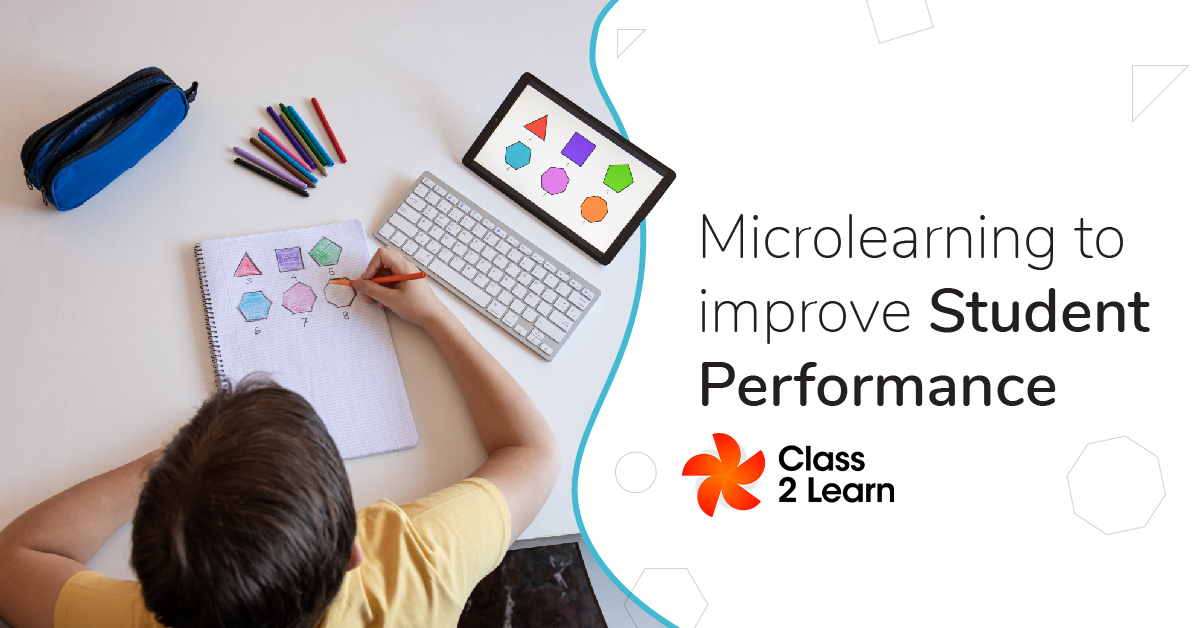
How Microlearning Can Improve Student Performance?

 10 mins read
10 mins readOnline learning platforms are poised to play a major role in education in areas such as K-12, higher learning institutions, workplace training, and independent learning. One of the biggest trends in digital learning is micro-learning, where lessons are divided into smaller, bite-sized pieces to be taught.
Microlearning can distill the most important concepts of lessons and convey them without overtaxing the short attention spans of students. However, microlearning has its limitations, and it needs to be structured well to truly teach the same thing as a longer lesson while being divided into parts.
Reasons for Microlearning
There are several reasons why microlearning is appreciated by learning platforms and their users:
- Students will have the ability to retain more knowledge. An educational video should be between 5 and 10 minutes long. Assigning hour-long films increases the possibility that students may be distracted or will not pay careful attention to particular areas of the course.
- Using shorter videos, students can schedule their lessons whenever they choose, regardless of how much work or other responsibilities they are juggling. Longer classes need time commitment from students or the attempt to finish online courses while multitasking, resulting in distractions and ineffective learning.
- Because they can see the conclusion of the task, pupils will feel more successful when they finish shorter projects. Additionally, it makes it easier for teachers to determine how well students have completed and understand the course material.
- Microlearning is more accessible on the go: short videos or blog posts are easier to engage with on mobile devices. Students are more likely to take and appreciate courses they can do on their devices. 48% of those surveyed about workplace learning management systems said they would be somewhat more likely or much more likely to use them if they were mobile-accessible.
- Students will feel more involved and will be more enthusiastic to participate in their learning, which will improve their performance. In the same study, 58% of those polled stated they could be more inclined or much more willing to adopt workplace learning management systems if they were developed for microlearning.
- Lessons will be better organized and laid out due to the structure of microlearning. Good microlearning requires larger blocks of content to be broken up into coherent parts, so course designers can see whether their content flows in a logical way and covers all of the subject matter.
- Lessons can be given ‘just in time. K-12 students can be assigned brief supplementary materials that tie into the curriculum for additional review. For continuing education and training purposes, users can take only the courses that pertain to their current goals.
Implementing Microlearning
Microlearning needs to be defined by more than just shorter spans of time. Each module needs to convey a single complete idea. Failing in either way causes problems: trying to contain multiple concepts in a microlearning module will distract from a single intended point that students need to retain while having the module introduce but not complete a concept will lead students to forget if they don’t move on to the next part immediately.
Due to the limited number of lessons, face-to-face lessons include a group of lessons. This limit does not apply to digital courses, so it makes sense to assign more and smaller assignments.
It’s usually not enough to treat each completed microlearning event as an accomplishment that stands alone. Build milestones into the completion of sets of videos, assignments, or challenges so they can see what they have accomplished on a larger scale and review what they’ve learned. This prevents them from feeling intimidated by a long list of small assignments that are required.
Issues with Microlearning
Microlearning has its limits, and there are times when it’s not the right solution. The need to focus on a core topic in each module can make it difficult to build toward a larger unit and keep the modules in context. Resources may not be equally available for each microlearning segment, making it harder to design videos or presentations for some.
While microlearning can improve engagement and retention in some cases, it doesn’t automatically make source material more interesting or understandable if it is taught poorly. And certain concepts may not be able to be broken down into segments easily, and trying can make them harder to understand.
Ultimately, microlearning is a valuable tool that has been overlooked due to the restrictions of traditional teaching methods. While not applicable in all circumstances, it can make learning more accessible and encourage a higher rate of participation and success in online education.





